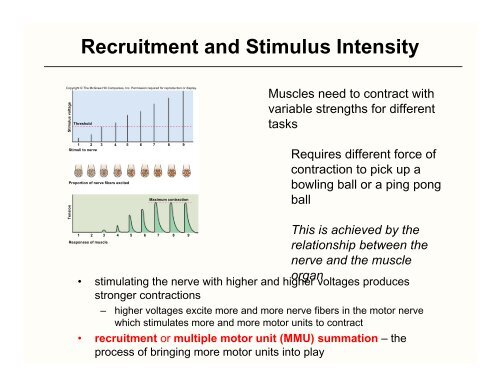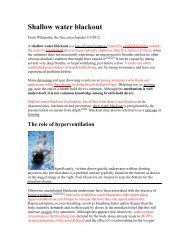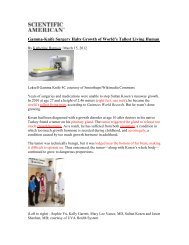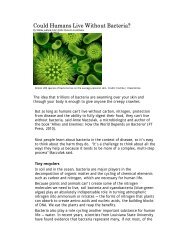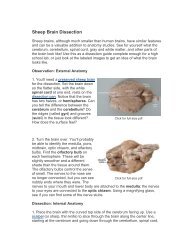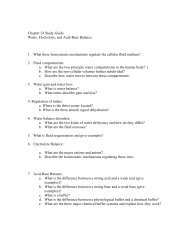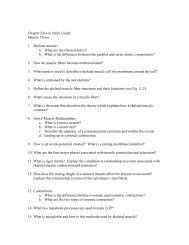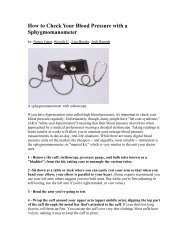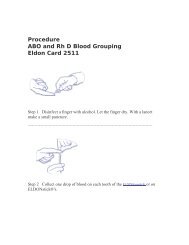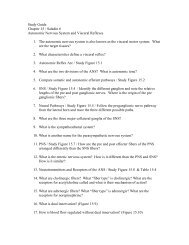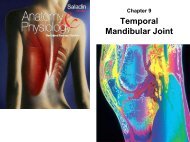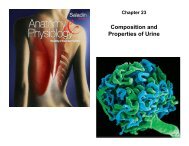Length Tension Relationship & Whole Muscle Behavior
Length Tension Relationship & Whole Muscle Behavior
Length Tension Relationship & Whole Muscle Behavior
- No tags were found...
Create successful ePaper yourself
Turn your PDF publications into a flip-book with our unique Google optimized e-Paper software.
Recruitment and Stimulus Intensity<br />
Copyright © The McGraw-Hill Companies, Inc. Permission required for reproduction or display.<br />
Stimulus voltage<br />
Threshold<br />
<strong>Muscle</strong>s need to contract with<br />
variable strengths for different<br />
tasks<br />
1 2 3 4 5 6 7 8 9<br />
Stimuli to nerve<br />
Proportion of nerve fibers excited<br />
<strong>Tension</strong><br />
This is achieved by the<br />
1 2 3 4 5 6 7 8 9<br />
relationship between the<br />
nerve and the muscle<br />
organ<br />
• stimulating the nerve with higher and higher voltages produces<br />
stronger contractions<br />
– higher voltages excite more and more nerve fibers in the motor nerve<br />
which stimulates more and more motor units to contract<br />
Responses of muscle<br />
Maximum contraction<br />
Requires different force of<br />
contraction to pick up a<br />
bowling ball or a ping pong<br />
ball<br />
• recruitment or multiple motor unit (MMU) summation – the<br />
process of bringing more motor units into play


